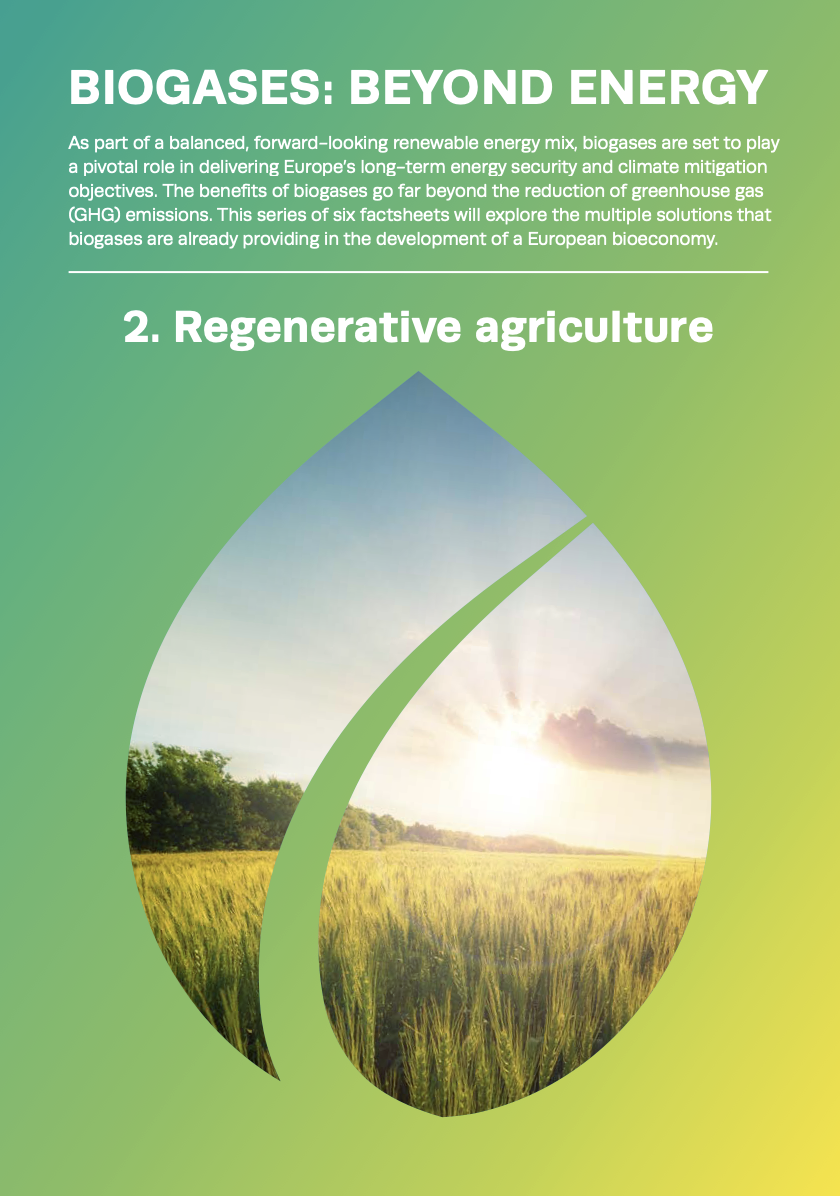We are pleased to announce that the second factsheet of the new information campaign of the European Biogas Association (EBA) “About regenerative agriculture” is already available.

You can get acquainted with the first and the list of future publications by following the link.
We remind you that biogases will play a pivotal role in delivering Europe’s long-term energy security and climate mitigation objectives, as part of a forward-looking and balanced renewable energy mix. Besides, their benefits go far beyond the reduction of greenhouse gas (GHG) emissions. That is why attention to this source of renewable energy and scientific developments regarding biogas is increasing.
The second factsheet explores the role of biogas in renewable agriculture development.
Agriculture is dependent on weather, land, water and natural resources, making it particularly susceptible to climate change. Issues such as erosion and degradation of the soil, more frequent and more severe droughts, water pollution, and biodiversity losses pose a significant challenge: if the agricultural sector does not find ways to address them, adverse conditions such as these will increasingly lead to consumer price volatility and impact severely on the affordability of food items.
Regenerative agriculture is vital to the development of an adaptive, sustainable food system. It has a positive impact on climate, soil health, resource use efficiency, bio-diversity and ultimately prosperity. The regenerative approach promotes agronomic practices such as the adoption of alternatives to synthetic fertilisers, the reduced use of pesticides and/or tillage (preparation of the soil by mechanical agitation), and the provision of soil cover through cover crops, including sequential crops. These practices increase carbon sequestration potential, improve the health and fertility of the soil, facilitate the recycling of nutrients needed by plants for growth, enhance water retention capacity and help protect natural habitats.
How do biogas systems complement regenerative agriculture?
Biogas systems are circular economy hubs, providing multiple benefits in line with the principles of regenerative agriculture (see also the infographic below):
- Using manure or agricultural residues as feedstocks for anaerobic digestion (AD) mitigates greenhouse gas (GHG) emissions and nitrate leaching. Additionally, if we combine the use of sequential cropping with biogas production, the second crop grown – a cover or catch crop with multiple environmental benefits – is often not suitable for food or feed and can therefore be better valorised through AD.
- AD converts feedstocks into two valuable assets: renewable energy and digestate. When spread on fields, digestate is an organic fertiliser which improves soil health, allows carbon sequestration and promotes plant disease resistance. The use of digestate also reduces GHG emissions by replacing the use of synthetic fertilisers.
- Both the main crop harvest and livestock farming provide consumers with quality food.

Read more about the information campaign at the link.
Download the second factsheet “About regenerative agriculture” here.